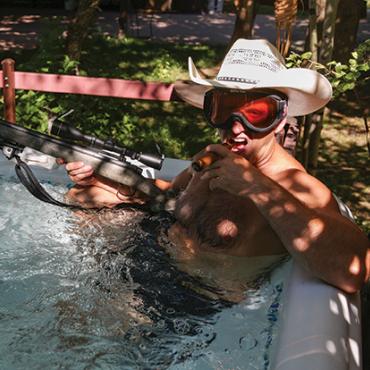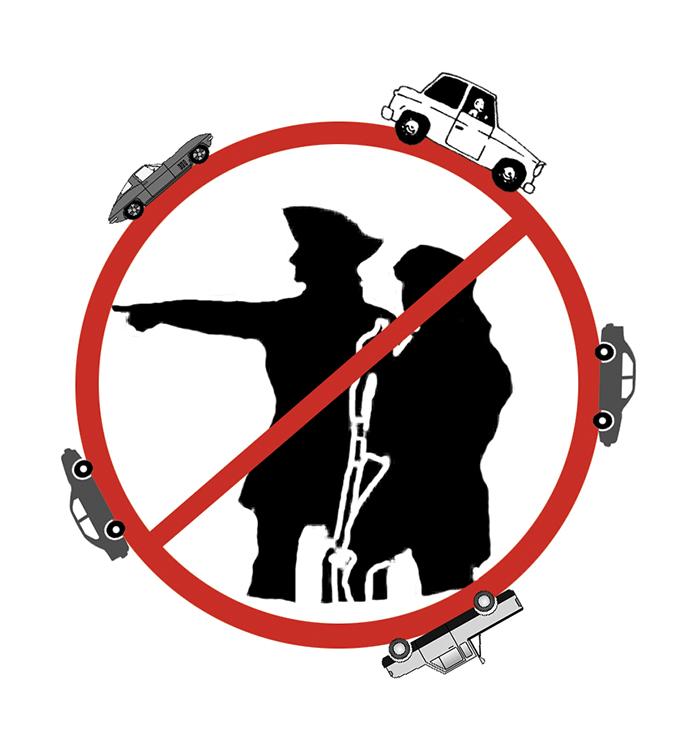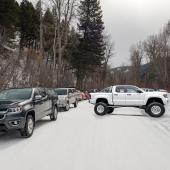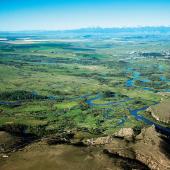It's (Round) About Time
The Constitution only gives people the right to pursue happiness. You have to catch it yourself. —Benjamin Franklin
I was thinking about this quote the other day while circling the new Bozeman Library roundabout. Specifically, I was thinking, does the same thing apply to understanding? Because I’ve been doing laps for a while now—even managed to lure two more cars in behind me—and I still have no idea what the heck this roundabout is for. Shouldn’t there be a sign? Or is it up to me to decipher the purpose of this strange, Sisyphean orbit?
My mind whirled in time with the squeak of straining rubber: Could it be a kind of vortex, wherein I gain sufficient speed to be sucked into a parallel-dimension parking lot somewhere inside the library itself? How innovative, and how sustainable! Or maybe deep within the new building’s bowels sat a nerdy government official, recording my tire signature for a new Patriot Act requirement.
Then, all at once, a terrifying thought struck me: Could they be planning to erect a Lewis & Clark statue inside the roundabout? No! I thought the bicentennial was over! For four long years we’ve endured Lewis & Clark this, Lewis & Clark that, ad infinitum. They’ve barged into our collective consciousness at every book kiosk and magazine rack; adorning posters and brochures; on daily NPR programs (another mystery: why the Irish background music?); and on TV, radio, and magazine ads—enough already!
Like everyone else, Outside Bozeman got sucked into the Lewis and Clark–promoting frenzy. For several issues, we featured stories about the fabled explorers and their adventures in southwest Montana. But eventually a question scratched its way to the surface: Why do these yahoos get all the attention? Sure, they drug a few boats 2,500 miles to the Pacific Ocean through hostile Indian territory; but what about Jim Bridger, John Colter, and all the other mountain men who covered much of the same ground, and without a small army to back them up? What about A.B. Guthrie, Charlie Russell, and Jeannette Rankin? Evel Knievel’s from Butte, for crying out loud. Can we be so starved for legends that we have to worship guys who can’t even spell?
Which made the roundabout statue idea all the more frightening. Could it be, as a capitulation to our convenience-driven culture, a kind of drive-through history book? Will they install signs around the statue, imparting illiterate flourishes from the L&C journals? I had a nightmarish vision of being stuck, European Vacation–like, driving ‘round and ‘round while misspelled words and bizarre capitalizations assailed my scholarly sensibilities. And this at a library, a place of learning! Such grim irony was almost too much to bear.
Eventually I managed to extricate myself from the roundabout’s centrifugal grasp. The other cars peeled off uncertainly in various directions, and we all went about our lives, no worse for the wear. Maybe I’m just being a grump, I thought. Lewis & Clark were studs, no doubt, and the bicentennial generated a lot of tourism and interest in local history—something we can’t have too much of. And all those descriptions of early 19th-century Montana are pretty amazing, bad spelling or no.
I guess it’s just a matter of knowing when to say when. Even the most beautiful, snow-filled winter must eventually come to an end, so that spring can spread its verdant glory across the land. No matter how good the skiing was, still we embrace the new season with excitement and affection. Change, above all else, keeps life interesting.
So here’s to a new season, a new sense of anticipation, and a baffling new piece of civil engineering—all sans Lewis & Clark, thank you very much.











